Does AAC Really Work with Infants and Toddlers?
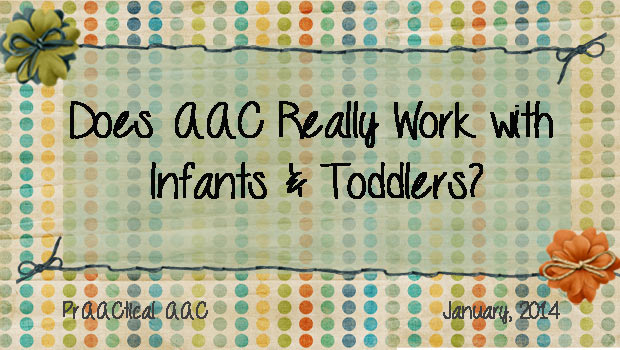
We are occasionally asked how old children have to be before you can begin teaching AAC. Our answer: There is no set minimum age. Nor is there any research evidence that one has to use an oral-language only approach for a set period of time before beginning AAC.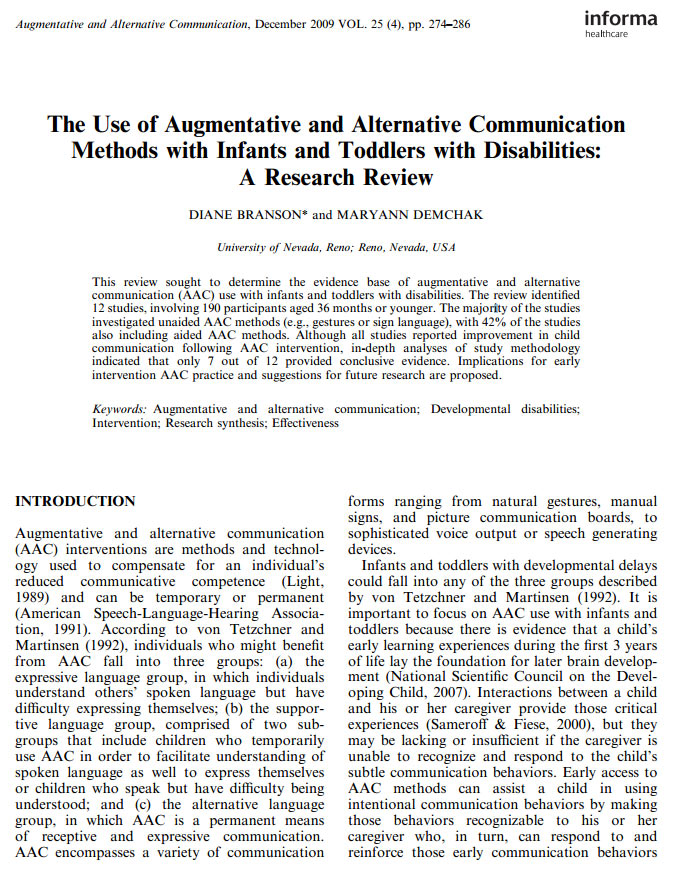
Today, we’re delighted to be able to share an article on this topic with you. This article describes a research review in which Branson and Demchak identified a dozen research studies looking specifically at the use of various AAC tools and strategies with infants and toddlers. Data from 190 children up to 36 months of age were examined. Of the 12 studies reviewed, 7 met criteria for having conclusive findings. In 97% of all cases, the children’s communication skills improved. Looking only at the 7 most rigorous studies is even more encouraging: All 135 babies/toddlers demonstrated improved communication skills following AAC intervention. The children had a variety of diagnoses, including Down Syndrome, autism spectrum disorders, cerebral palsy, multiple disabilities, agenesis of the corpus callosum, and other etiologies.
Among the researchers’ conclusions:
- Young children (age 3 and below) can successfully use both aided and unaided AAC.
- Communication partners were effective in creating communication opportunities for the learning and use of AAC in infants and toddlers.
- Using AAC with young children facilitates “early learning experiences that can promote the child’s further development.”
- “None of the studies reviewed supported the idea of a minimum age requirement for introducing AAC.” (p 180)
While further research is needed, Branson and Demchak assert that “both clinicians and parents should be aware that a variety of AAC methods can be effective with infants and toddlers and should be explored as early as possible.”
We hope you enjoy reading this systematic review and are grateful to Communication Matters, ISAAC, and the publisher of the AAC journal, Informa, for making this article available without cost. As of today, it is available to all. If you are interested in the topic, we suggest downloading the article and saving it to your computer as we don’t know how long it will be available.
::::::::::::::::::::::::::::::::::::::::::::::::::::::::::::::::::::
Branson, D. & Demchak, M. (2009). The use of augmentative and alternative communication methods with infants and toddlers with disabilities: A research review. Augmentative and Alternative Communication, 25 (4), 274-286. DOI: 10.3109/07434610903384529
Direct link to article: http://informahealthcare.com/doi/pdf/10.3109/07434610903384529
Difficulty in accessing the article? Go to this page first, then click on the article title. Direct link: http://www.communicationmatters.org.uk/aac-journal-free-articles
Filed under: PrAACtical Thinking
Tagged With: infants, research, toddlers, young children
This post was written by Carole Zangari

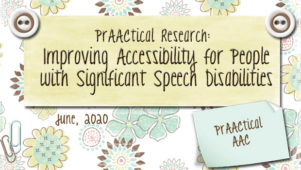
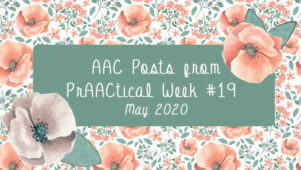
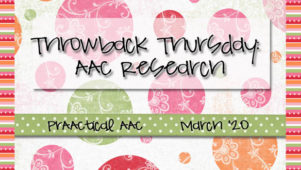
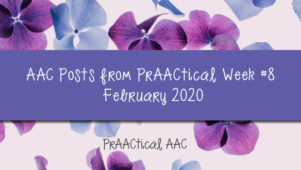
7 Comments
Thank you for sharing. I tried to download today’s (1/14/14) featured article from informa healthcare after creating a login account, but the message I get says to pay for the article. Suggestions?
Thank you!!
Tammy, try going to this page first and then clicking on the name of the article: http://www.communicationmatters.org.uk/aac-journal-free-articles
THANK YOU!!! Got it! 🙂
Thank you for sharing this. I am the ED for the Down Syndrome Connection of the Bay Area in Northern Ca. We did a study of our own by holding an intensive summer program (Communication Readiness Program) for 8 children ages 4-6 that included AAC intervention. It was also determined that it was not too early to start AAC. Many young children with DS do not speak for several years due to delay, low muscle tone and or Apraxia of speech for example so they start preschool and kindergarten without necessary supports to participate or learn. Our goal with the 8 4-6 year olds was to determine exactly what they needed to communicate, put the necessary supports in place during the 8 week program, teach literacy and implement oral motor practice. We also are following the 8 children in school and gave a transition binder and the supports needed to their fall teachers. Without some form of AAC we are setting up children to fail and of not be included. We cannot rely on the school systems to give the children what they need to succeed as their answer is to label them as moderate to severely handicapped because they don’t speak and put them in an SDC with children who have behavior issues because behavior = communication. Thanks again. This type of data shows what we are working on is important and that we can start younger with a benefit to the child. Sincerely grateful to the folks who conducted this test. We will be sending ours out hopefully sometime in the neat future to share.
Thanks for sharing this, Nancy. I would love to come see what you guys are doing the next time I am in the Bay Area!
does this mean that my 13mo daughter could do this
Allie, every situation is different but a growing number of people are using AAC with young children and having good results. There is no reason to believe that using AAC would hinder speech and language development, so this may be a good thing to consider for your little girl. If she has a speech-language pathologist (SLP) or early intervention team, you might want to raise the issue with them.